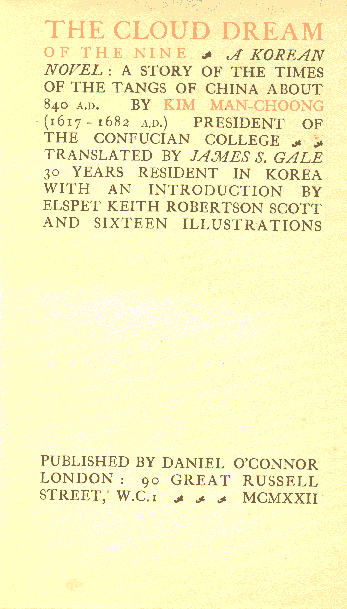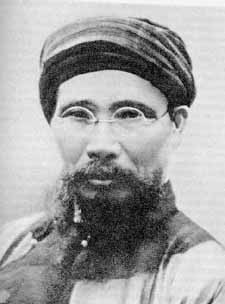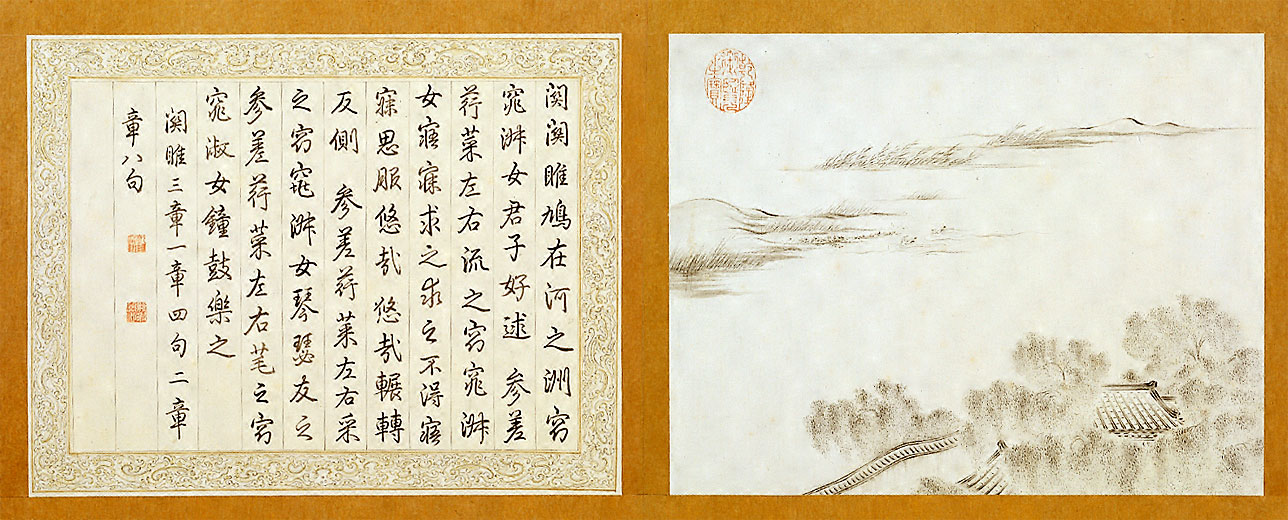|
Chinese-language Literature Of Korea
Hanmunhak or Literary Chinese literature in Korea (Hangul: 한문학 Hanja: 漢文學) is Korean literature written in Literary Chinese, which represents an early phase of Korean literature and influenced the literature written in the Korean language. Classical Chinese in Korea The role of the Literary Chinese or Hanmun (Hangul: 한문; Hanja: 漢文) in Korea was akin to the same role as Kanbun in Japan and in Vietnam, Hán văn; a role which is broadly comparable to that of the Latin language in Europe. During this period the use of written Chinese language did not indicate that Korean literati were fluent in spoken Chinese.James B. Palais Confucian Statecraft and Korean Institutions: Yu Hyŏngwŏn and the ... 1996 p639 "Unfortunately, Yu found that despite the facility of educated Koreans in reading classical Chinese texts, there were absolutely no civil officials who understood the spoken Chinese language. King Sejong in the early fifteenth century had faced ..." Korean ... [...More Info...] [...Related Items...] OR: [Wikipedia] [Google] [Baidu] |
Hangul
The Korean alphabet is the modern writing system for the Korean language. In North Korea, the alphabet is known as (), and in South Korea, it is known as (). The letters for the five basic consonants reflect the shape of the speech organs used to pronounce them. They are systematically modified to indicate Phonetics, phonetic features. The vowel letters are systematically modified for related sounds, making Hangul a featural writing system. It has been described as a syllabic alphabet as it combines the features of Alphabet, alphabetic and Syllabary, syllabic writing systems. Hangul was created in 1443 by Sejong the Great, the fourth king of the Joseon dynasty. The alphabet was made as an attempt to increase literacy by serving as a complement to Hanja, which were Chinese characters used to write Literary Chinese in Korea by the 2nd century BCE, and had been adapted to write Korean by the 6th century CE. Modern Hangul orthography uses 24 basic letters: 14 consona ... [...More Info...] [...Related Items...] OR: [Wikipedia] [Google] [Baidu] |
Latin Language
Latin ( or ) is a classical language belonging to the Italic languages, Italic branch of the Indo-European languages. Latin was originally spoken by the Latins (Italic tribe), Latins in Latium (now known as Lazio), the lower Tiber area around Rome, Italy. Through the expansion of the Roman Republic, it became the dominant language in the Italian Peninsula and subsequently throughout the Roman Empire. It has greatly influenced many languages, Latin influence in English, including English, having contributed List of Latin words with English derivatives, many words to the English lexicon, particularly after the Christianity in Anglo-Saxon England, Christianization of the Anglo-Saxons and the Norman Conquest. Latin Root (linguistics), roots appear frequently in the technical vocabulary used by fields such as theology, List of Latin and Greek words commonly used in systematic names, the sciences, List of medical roots, suffixes and prefixes, medicine, and List of Latin legal terms ... [...More Info...] [...Related Items...] OR: [Wikipedia] [Google] [Baidu] |
The Cloud Dream Of The Nine
''The Cloud Dream of the Nine'', also translated as ''The Nine Cloud Dream'' (), is a 17th-century Korean novel set in the Chinese Tang dynasty. Although widely attributed to Kim Man-jung, there have been some arguments about whether he was the original author. However, as both a Hangul and fantasy novel, it was not something a Korean scholar of the 17th century would own up to writing. The consensus of the Korean scholarly community is that Kim Man-jung was the author. It has been called "one of the most beloved masterpieces in Korean literature." It was the first literary work from Korea to be translated into English, by James Scarth Gale in 1922. Richard Rutt's translation entitled ''A Nine Cloud Dream'' appeared in 1974. In 2019, Heinz Insu Fenkl published a new translation entitled ''The Nine Cloud Dream'' including his lengthy introduction with Penguin Classics which was hailed by The New York Times as one of the most anticipated books of 2019. ''The Cloud Dream of t ... [...More Info...] [...Related Items...] OR: [Wikipedia] [Google] [Baidu] |
Geumo Sinhwa
''Geumo Sinhwa'' () is a collection of novellas, written in Chinese characters by a Korean author Kim Si-sŭp (who was born during the reign of Sejong the Great). Like most of the early literature of Korea it forms part of the Chinese-language literature of Korea. The title comes from Geumo-san, the Mount of the Golden Turtle, today called Namsan (Gyeongju), which was the site of the Yongjang Temple where tradition records that Kim wrote the stories. The novel is written after the Chinese Jiandeng Xinhua (Tales while trimming the lampwick, 1378) of Qu You, but is not simply a pasticcio In music, a ''pasticcio'' or ''pastiche'' is an opera or other musical work composed of works by different composers who may or may not have been working together, or an adaptation or localization of an existing work that is loose, unauthorized, ... of the works contained in Jiandeng Xinhua. Korean literature: its classical heritage and modern breakthroughs UNESCO Korea Committee 2003 p39 ... [...More Info...] [...Related Items...] OR: [Wikipedia] [Google] [Baidu] |
Samguk Yusa
''Samguk yusa'' (; ) or ''Memorabilia of the Three Kingdoms'' is a collection of legends, folktales, and historical accounts relating to the Three Kingdoms of Korea (Goguryeo, Baekje, and Silla), as well as to other periods and states before, during, and after the Three Kingdoms period. It was compiled by the Buddhism, Buddhist monk Il-yeon in the late Goryeo dynasty, around 1280. It is the earliest extant record of the Dangun legend, which records the founding of Gojoseon as the first Korean nation. ''Samguk yusa'' is National Treasure No. 306. ''Samguk yusa'' is a history record composed of five volumes divided into nine parts. It documents various tales and legends which are categorized into two parts: historical events and Buddhist narratives. The text contains various historical narratives such as tales of the Three Kingdoms period, myths, legends, genealogies, histories, and Buddhist tales, which have helped maintain folklore from medieval Korea. "Yusa" is a term used to d ... [...More Info...] [...Related Items...] OR: [Wikipedia] [Google] [Baidu] |
Samguk Sagi
''Samguk sagi'' () is a historical record of the Three Kingdoms of Korea: Goguryeo, Baekje, and Silla. Completed in 1145, it is well-known in Korea as the oldest surviving chronicle of Korean history. The ''Samguk sagi'' is written in Classical Chinese, the written language of the literati of ancient Korea. Its compilation was ordered by King Injong of Goryeo (r. 1122–1146) and undertaken by a government official and historian named Kim Bu-sik with his team of junior scholars. The document has been digitized by the National Institute of Korean History and is available online with Modern Korean translation in Hangul. Description ''Samguk sagi'' is critical to the study of Korean history during the Three Kingdoms and Unified Silla periods. Not only because this work, and its Buddhist counterpart '' Samguk yusa'', are the only remaining Korean sources for the period, but also because the ''Samguk sagi'' contains a large amount of information and details. For example, the transl ... [...More Info...] [...Related Items...] OR: [Wikipedia] [Google] [Baidu] |
Hangul
The Korean alphabet is the modern writing system for the Korean language. In North Korea, the alphabet is known as (), and in South Korea, it is known as (). The letters for the five basic consonants reflect the shape of the speech organs used to pronounce them. They are systematically modified to indicate Phonetics, phonetic features. The vowel letters are systematically modified for related sounds, making Hangul a featural writing system. It has been described as a syllabic alphabet as it combines the features of Alphabet, alphabetic and Syllabary, syllabic writing systems. Hangul was created in 1443 by Sejong the Great, the fourth king of the Joseon dynasty. The alphabet was made as an attempt to increase literacy by serving as a complement to Hanja, which were Chinese characters used to write Literary Chinese in Korea by the 2nd century BCE, and had been adapted to write Korean by the 6th century CE. Modern Hangul orthography uses 24 basic letters: 14 consona ... [...More Info...] [...Related Items...] OR: [Wikipedia] [Google] [Baidu] |
Chinese Language
Chinese ( or ) is a group of languages spoken natively by the ethnic Han Chinese majority and List of ethnic groups in China, many minority ethnic groups in China, as well as by various communities of the Chinese diaspora. Approximately 1.39 billion people, or 17% of the global population, speak a variety of Chinese as their first language. Chinese languages form the Sinitic languages, Sinitic branch of the Sino-Tibetan language family. The spoken varieties of Chinese are usually considered by native speakers to be dialects of a single language. However, their lack of mutual intelligibility means they are sometimes considered to be separate languages in a Language family, family. Investigation of the historical relationships among the varieties of Chinese is ongoing. Currently, most classifications posit 7 to 13 main regional groups based on phonetic developments from Middle Chinese, of which the most spoken by far is Mandarin Chinese, Mandarin with 66%, or around 800&nb ... [...More Info...] [...Related Items...] OR: [Wikipedia] [Google] [Baidu] |
Hán Văn
Literary Chinese ( Vietnamese: , ; chữ Hán: 漢文, 文言) was the medium of all formal writing in Vietnam for almost all of the country's history until the early 20th century, when it was replaced by vernacular writing in Vietnamese using the Latin-based Vietnamese alphabet. The language was the same as that used in China, as well as in Korea and Japan, and used the same standard Chinese characters. It was used for official business, historical annals, fiction, verse, scholarship, and even for declarations of Vietnamese determination to resist Chinese invaders. Literary Chinese Literary Chinese was a style of writing modelled on the classics of the Warring States period and Han dynasty, such as the ''Mencius'', the '' Commentary of Zuo'' and Sima Qian's '' Historical Records''. It remained largely static while the various varieties of Chinese evolved and diverged to the point of mutual unintelligibility. The language was also used for formal writing in Vietnam, Korea and J ... [...More Info...] [...Related Items...] OR: [Wikipedia] [Google] [Baidu] |
Hanja
Hanja (; ), alternatively spelled Hancha, are Chinese characters used to write the Korean language. After characters were introduced to Korea to write Literary Chinese, they were adapted to write Korean as early as the Gojoseon period. () refers to Sino-Korean vocabulary, which can be written with Hanja, and () refers to Classical Chinese writing, although ''Hanja'' is also sometimes used to encompass both concepts. Because Hanja characters have never undergone any major reforms, they more closely resemble traditional Chinese and kyūjitai, traditional Japanese characters, although the stroke orders for certain characters are slightly different. Such examples are the characters and , as well as and . Only a small number of Hanja characters were modified or are unique to Korean, with the rest being identical to the traditional Chinese characters. By contrast, many of the Chinese characters currently in use in mainland China, Malaysia and Singapore have been simplified Chin ... [...More Info...] [...Related Items...] OR: [Wikipedia] [Google] [Baidu] |
Kanbun
''Kanbun'' ( 'Han Chinese, Han writing') is a system for writing Literary Chinese used in Japan from the Nara period until the 20th century. Much of Japanese literature was written in this style and it was the general writing style for official and intellectual works throughout the period. As a result, Sino-Japanese vocabulary makes up a large portion of the Japanese language, Japanese lexicon and much classical Chinese literature is accessible to Japanese readers in some resemblance of the original. History The Japanese writing system originated through adoption and adaptation of written Chinese. Some of Japan's oldest books (e.g. the ''Nihon Shoki'') and dictionaries (e.g. the ''Tenrei Banshō Meigi'' and ''Wamyō Ruijushō'') were written in ''kanbun''. Other Japanese literary genres have parallels; the ''Kaifūsō'' is the oldest collection of . Burton Watson's English translations of ''kanbun'' compositions provide an introduction to this literary field. Samuel Martin ... [...More Info...] [...Related Items...] OR: [Wikipedia] [Google] [Baidu] |
Hanmun
Classical Chinese is the language in which the classics of Chinese literature were written, from . For millennia thereafter, the written Chinese used in these works was imitated and iterated upon by scholars in a form now called Literary Chinese, which was used for almost all formal writing in China until the early 20th century. Each written character corresponds to a single spoken syllable, and almost always to a single independent word. As a result, the characteristic style of the language is comparatively terse. Starting in the 2nd century CE, use of Literary Chinese spread to the countries surrounding China, including Vietnam, Korea, Japan, and the Ryukyu Islands, where it represented the only known form of writing. Literary Chinese was adopted as the language of civil administration in these countries, creating what is known as the Sinosphere. Each additionally developed systems of readings and annotations that enabled non-Chinese speakers to interpret Literary ... [...More Info...] [...Related Items...] OR: [Wikipedia] [Google] [Baidu] |










